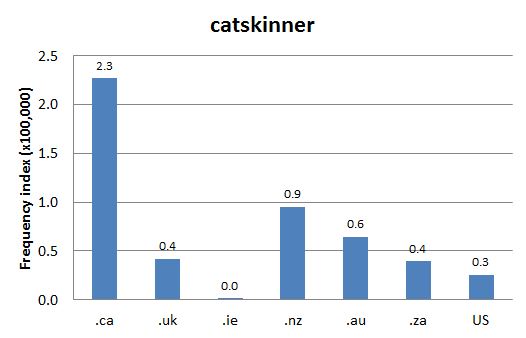DCHP-2
catskinner cat skinner, cat-skinner, Cat skinner [after mule-skinner] DCHP-2 (October 2016)
1 n. — Mining, forestry
the operator of a piece of tracked heavy equipment, such as a tractor with caterpillar treads.
Type: 4. Culturally Significant — The tracked heavy equipment produced by Caterpillar Inc. are often referred to as cats. This term appropriates the nickname and combines it with mule-skinner, a driver of a mule team. Though catskinner is used in several other countries (see Chart 1), it is culturally significant to Canada due to the long history and importance of the mining and forestry industries. Frequency counts (see Chart 1) show a considerable gap between the .ca and the US domains.
See also COD-2, s.v. "catskinner", which is marked "N Amer", ITP Nelson, s.v. "catskinner", which is marked "Canadian", and DA, s.v. "catskinner", W-3, s.v. "catskinner".See also: mule-skinner skinner (def. 2)
2 n. — Mining, forestry
the leader of a line of tracked vehicles (a cat-train).
Type: 4. Culturally Significant — See meaning 1.
See also ITP Nelson, s.v. "catskinner", which is marked "Canadian".
